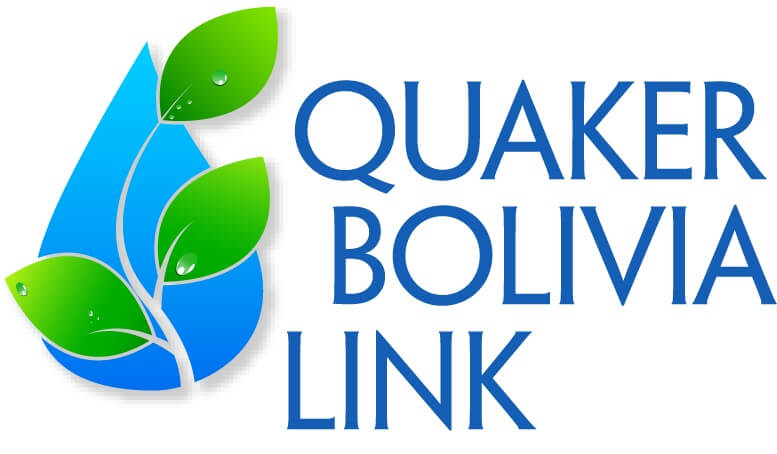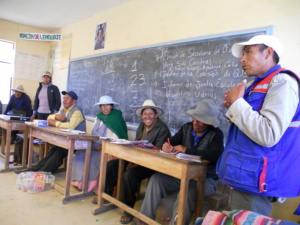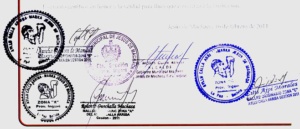Quaker Bolivia Link has been successful and sustainable because of its unique structure and approach to development. While most development programs operate using a top-down structure, by which the funding entities determine the scope and nature of goods and services delivered to beneficiaries, QBL does the opposite. The indigenous communities, or beneficiaries, initiate a relationship with Quaker Bolivia Link by working with their local leaders and the Bolivian QBL staff in La Paz to design a project proposal based on their specific situation. This includes discussing community needs, and designing a detailed budget, a logistical plan to source materials, and an appropriate timeline. Once the project proposal is reviewed and approved by the QBL staff and Board in Bolivia, it is recommended to the Boards in the UK and USA for possible funding. Each community also shares the investment of the project by providing 10-30% of the overall funding.
All three Boards communicate with the Bolivian technical staff to determine funding allocations based on need, feasibility, and sustainability. Once funding is secured, the implementation of a project involves the entire community and beyond. Everyone within the benefitting area is trained to construct, operate, maintain, or care for the project assets. To further improve sustainable economic development among the indigenous people and in Bolivia in general, Quaker Bolivia Link and the project beneficiaries remain committed to sourcing materials locally and almost exclusively hiring local contractors. In this way, the reach of a project extends far beyond community lines. The QBL staff in Bolivia continues to monitor each project quarterly and each community contributes to a maintenance fund to ensure sustainability of the projects.
All QBL projects involve three way agreements between the community in need, the municipality in which the project is located and QBL Bolivia. This working relationship is formalized in a legal agreement. The community requesting the project establishes a committee which plans and manages the project both during its implementation and its operation. The local community also provides much of the manual labor involved. The municipality provides significant financial support and at times its professional staff offer their expertise. QBL makes a substantial financial contribution as well as providing technical and management assistance; it accompanies the community through the planning, implementation and follow up stages of the project.
The Process
A project proposal goes through several steps before we are able to fund it. The work doesn’t stop once we celebrate. Read about how we review each idea, decide to fund it, then do the necessary follow-up to make sure it works for the long-term.
It takes a village
All of our projects begin when a community expresses their interest in a project either to QBL directly or through a local government office with which QBL has been working.
Coordinating with government
Before QBL begins work with a village, we do significant preparation and coordination with the local municipal government (similar to counties in the U.S.). The municipal government is responsible for providing funding and expertise for small villages located within their jurisdiction. They are also responsible for developing yearly plans to promote the development of their municipality. QBL respects and encourages this local governance and responsibility.
Planning the project
Contacting the village
Municipalities usually have a list of projects planned for their area. QBL will identify those projects that match our capacities and plan a visit. It usually takes two or three visits before we can meet with the whole community. We have to find the community leaders first and they schedule a village meeting (again, we seek to always respect local leadership and work through local authorities).
Sometimes village leaders will reach out to us. They will attend an inauguration and present us with a letter requesting funding for a project. They also make sure that we sign it to be able to show their villages that they made contact with us.
Establishing need
During the meeting with the whole village, we discuss the project that they had requested. We explain what we ask from them in terms of carrying out the project. For example, they need to provide local labor and a small fund to begin the project.
One common problem is trying to figure out how many families actually live in a village. Migration to the cities to seek better living conditions is widespread throughout the Altiplano. Sometimes it is only a father or perhaps an older son. Other times it is a whole family that comes back perhaps once a month, or during planting and harvest seasons. Eventually, these families may only return once a year for special holidays. All of these variables can make it difficult to get an accurate number of families that actually live in a village.
We also do a diagnostic in the community in order to get a better understanding of the living conditions. Basic information such as a house’s construction materials, the presence of basic services or the number of school children, can provide us with important information about how we should prioritize the project.
Approving the proposal
Once all of this information is compiled into a proposed project, we meet again with the community and ask them to formally indicate their interest in the project and that they are willing to fulfill their responsibilities once the project is funded. The municipality also signs this document in the case of most projects, since they will provide 30% of the funding. At this point, we know that the project has broad support beginning in the village, with the municipal government as well as our technical staff.
The Bolivian Coordinator and Board review the project and give it their “vista buena” before sending it to either the US or the UK for funding. In the US or the UK office (whichever received the project), the proposal is summarized in English and reviewed by the project committee. The project committee makes a recommendation to the respective Board to fund the project or not. The Board then approves the project and minutes our approval.
Once the funds are transferred to Bolivia, the Bolivian staff writes up a letter and presents the good news to the community. Once again, QBL and the village sign a document affirming our mutual commitments: QBL commits to providing the funding and technical support; the community commits to providing the labor and local building materials, such as rocks and sand for the cement. For those of you with experience in Latin America, seals, stamps and signatures are very important.
Now the project can start
With all of the fanfare and anticipation over, the villagers and QBL can begin the hard work of organizing, digging, building and, once the project is finished, celebrating.


